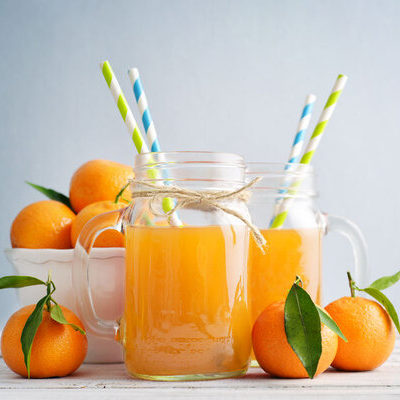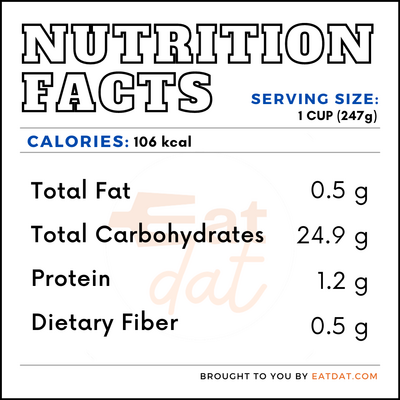
Tangerine Juice
What is Tangerine Juice?
Tangerine juice is the liquid extract from ripe tangerines, a citrus fruit. Tangerines are deep orange in color with a strong, sweet taste, as well as skin that is thin and has a firm and soft texture inside. These fruits are smaller than oranges in size and are hybrids of mandarin oranges, but are considered a separate species.
- These are tropical fruits, which can be used in salads, desserts, juices, liqueurs, and marinades.
- Tangerine juice can be made at home or store-bought.
Some of the top tangerine juice brands are:
- Perricone Farms
- Evolution Fresh
- Fresh & Easy
- Cuties Juice
- 365
- Trader Joe’s
Origin of tangerine juice
The word ‘tangerine’ comes from Tangier, Morocco. It was originally meant to be an adjective implying that the fruit is native to Tangier. However, this is an American nomenclature since tangerines were shipped to the US from Morocco in the late 1800s. Originally, the fruit is native to India, where it has been growing in the northeast part of the country for around 3,000 years. From India, tangerines traveled to China, and then North Africa, Australia, and Europe.
Nutrition
This fruit juice is rich in vitamins A, B6, and C, as well as thiamin, potassium, magnesium, and manganese. One cup of tangerine juice contains:

It has a low carbohydrate and sugar content compared to other juices and has some protein, as well. Like all citrus juices, this contains flavonoids, which are antioxidants that help in preventing cardiovascular diseases and cancers.
These flavonoids also have antiviral, antimicrobial, antiulcer, and anti-inflammatory properties. It also contains lutein, zeaxanthin, β-cryptoxanthin, and β-carotene in decent quantities, which have similar properties. This is also better at activating these beneficial properties than other citrus juices like lemon juice.
Commercial production
The commercial production of tangerine juice is similar to the juicing of other citrus fruits. It begins with the selection of ripe tangerines that are treated, pressed to extract the juice, and filtered before being pasteurized and packaged. Tangerines contain lactones, which form a bitter compound when stored or heated. This is the reason why it is often blended with orange juice with only 10 to 15 percent of the blend being tangerines. These fruits are also susceptible to decay when stored, which is why it is recommended to dispose of tangerines within 3 weeks of harvesting.
The main producers of tangerines in the world are China, Spain, and Japan. It is difficult to get exact data for tangerine juice consumption and production because of the fact that most tangerine juice is blended with orange juice. Tangerines are also considered relatively useless for juice production because of low juice content, higher cost, and off-flavor juice.
Tangerine juice recipes
This fruit juice can be used in many ways in the kitchen. It can be consumed as a beverage or used for marinating meats, cheeses, and vegetables. It is also handy in making syrups and sauces. The addition of tangerine juice in cooking imparts a mildly sweet taste to the dish.
Here are a few popular recipes:
- Tangerine Custard
- Tangerine Drizzle Cake
- Tangerine Pudding
- Tangerine Bavarian
- Tangerine Curd
- Tangerine Posset
- Greek Yogurt Tangerine Cake
- Tangerine Beef
FDA regulations
The Food & Drug Administration regulates tangerine juice and requires that it have at least 11.8 percent concentration. However, because of its citrus classification, this can be adjusted to correct the citric acid composition. The USDA sets the standards and grades for concentrated and canned tangerine juice.
References
“Tangerine.” Encyclopaedia Britannica, Encyclopaedia Britannica, 1 Feb. 2017, www.britannica.com/plant/tangerine-fruit.
Thomas H. Spreen, Projections of World Production and Consumption of Citrus to 2010, China / FAO Citrus Symposium
http://www.fao.org/3/x6732e/x6732e02.htm#3
R.P. Bates, J.R. Morris, and P.G. Crandall; Principles and practices of small and medium-scale fruit juice processing, Food Science and Human Nutrition Department, University of Florida United States, http://www.fao.org/3/y2515e/y2515e15.htm
Lv, Xinmiao et al. “Citrus fruits as a treasure trove of active natural metabolites that potentially provide benefits for human health.” Chemistry Central journal vol. 9 68. 24 Dec. 2015, doi:10.1186/s13065-015-0145-9, https://www.ncbi.nlm.nih.gov/pmc/articles/PMC4690266/
